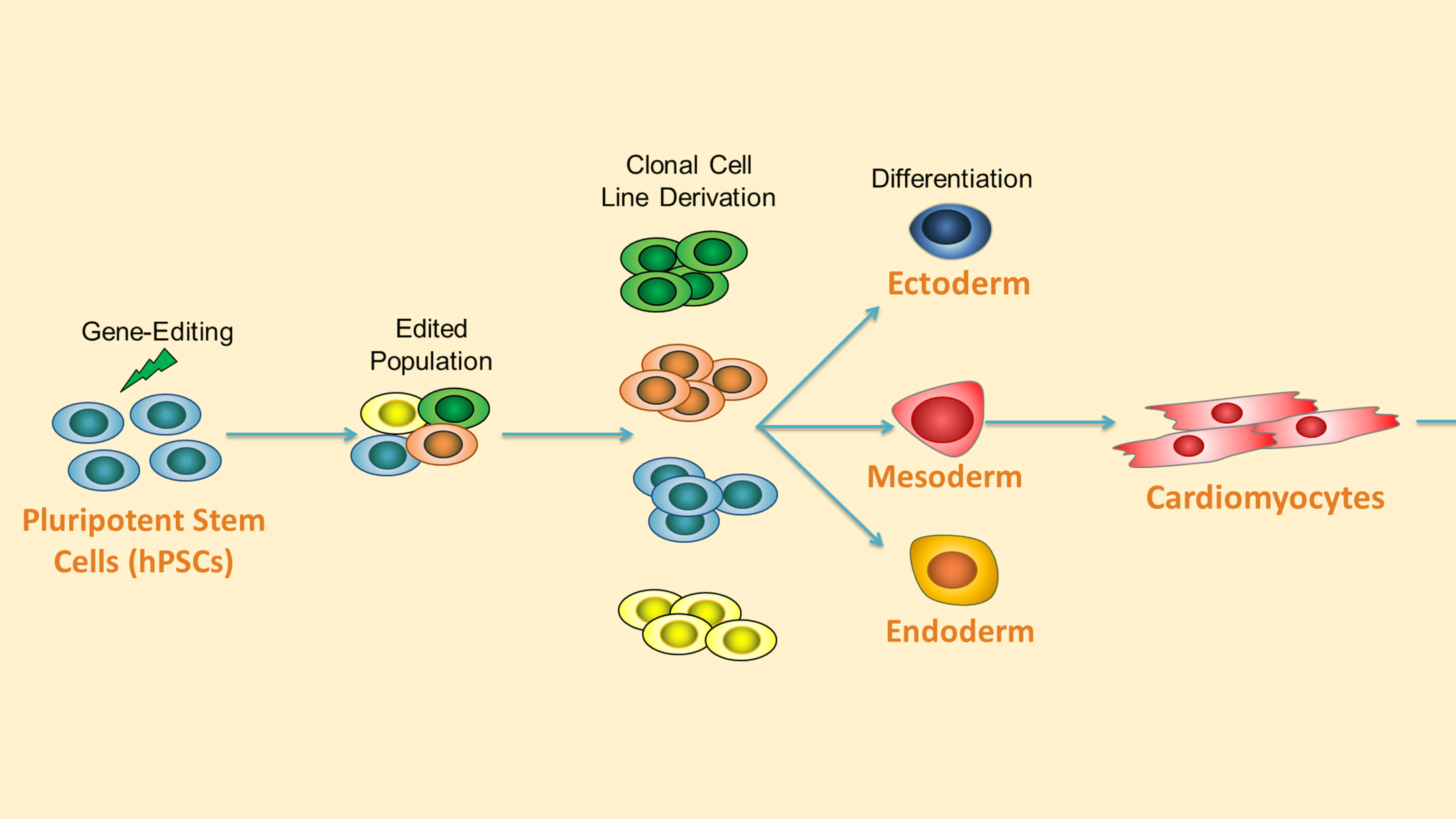Directed Differentiation and Disease Modeling
Human pluripotent stem cell (hPSC)-based models hold tremendous potential for studying human development and disease. Directed differentiation and disease modeling are two key methods for using hPSCs in drug discovery, cell therapy validation, and disease research.
- Directed differentiation of hPSCs refers to the in vitro differentiation of these cells toward a specific cell type through defined cell culture conditions. Directed differentiation is achieved by the addition of specific growth factors or small molecules.
- Disease modeling is an approach to study diseases using cells that display relevant pathological features. Disease modeling using hPSCs can be achieved by reproduction of a disorder-associated mutation with gene editing, isolation of embryonic stem cells (ESCs) from affected blastocysts; or generation of induced pluripotent stem cells (iPSCs) from patients’ somatic cells.
Explore the resources below to support your disease modeling studies using hPSCs.
Highly Efficient Single-Cell Human Pluripotent Stem Cell Cloning and Robust Cardiomyocyte Differentiation
Recorded during the ISSCR 2017 Innovation Showcase in Boston, this tutorial highlights human pluripotent stem cell (hPSC) gene-editing and cardiac differentiation workflows using the CloneR‚Ñ¢ supplement and the STEMdiff‚Ñ¢ Cardiomyocyte System. This talk is presented ∫£Ω«∆∆Ω‚∞Ê‚Äô Dr. Adam Hirst, scientist for pluripotent stem cell biology, and Dr. Vincenzo Macri, senior scientist for cardiomyocyte stem cell biology.
View Now >-
 Generate Size-Controlled Spheroids and Embryoid Bodies Using AggreWell‚Ñ¢ Microwell PlatesAggreWell‚Ñ¢ plates provide an easy and standardized approach to control size of embryoid bodies (EBs) for differentiation by adjusting initial cell input
Generate Size-Controlled Spheroids and Embryoid Bodies Using AggreWell‚Ñ¢ Microwell PlatesAggreWell‚Ñ¢ plates provide an easy and standardized approach to control size of embryoid bodies (EBs) for differentiation by adjusting initial cell input -
 STEMdiff‚Ñ¢: Products for Differentiating Human Pluripotent Stem CellsLearn about two new products, specifically optimized for the differentiation of human pluripotent stem cells, STEMdiff‚Ñ¢ APEL‚Ñ¢ Medium and STEMdiff‚Ñ¢ Neural Induction Medium
STEMdiff‚Ñ¢: Products for Differentiating Human Pluripotent Stem CellsLearn about two new products, specifically optimized for the differentiation of human pluripotent stem cells, STEMdiff‚Ñ¢ APEL‚Ñ¢ Medium and STEMdiff‚Ñ¢ Neural Induction Medium -
 How to Generate Neural Progenitor Cells from hPSCs Using STEMdiff‚Ñ¢ Neural Induction MediumSTEMdiff‚Ñ¢ Neural Induction Medium is a defined, serum-free and highly efficient medium for the differentiation of hESCs & iPSCs to NPCs
How to Generate Neural Progenitor Cells from hPSCs Using STEMdiff‚Ñ¢ Neural Induction MediumSTEMdiff‚Ñ¢ Neural Induction Medium is a defined, serum-free and highly efficient medium for the differentiation of hESCs & iPSCs to NPCs -
 How to Count hPSC Aggregates to Determine Plating Density for Maintenance and DifferentiationStep-by-step instructions for counting human pluripotent stem cell (hPSC) aggregates to determine and adjust the plating densities for hPSC maintenance and differentiation
How to Count hPSC Aggregates to Determine Plating Density for Maintenance and DifferentiationStep-by-step instructions for counting human pluripotent stem cell (hPSC) aggregates to determine and adjust the plating densities for hPSC maintenance and differentiation -
 Directed Differentiation of Pluripotent Stem CellsStrategies for differentiating ES and iPS cells into ectoderm, endoderm or mesoderm
Directed Differentiation of Pluripotent Stem CellsStrategies for differentiating ES and iPS cells into ectoderm, endoderm or mesoderm -
 Small Molecules, Big Impact in Pluripotent Stem Cell ResearchOverview of signaling pathways and small molecules in pluripotent stem cell research
Small Molecules, Big Impact in Pluripotent Stem Cell ResearchOverview of signaling pathways and small molecules in pluripotent stem cell research -
 Cell-Reprogramming Technology and NeuroscienceDetails on human iPSC-derived models of neuropsychiatric and neurodegenerative disorders
Cell-Reprogramming Technology and NeuroscienceDetails on human iPSC-derived models of neuropsychiatric and neurodegenerative disorders -
 SnapShot: GI Tract DevelopmentOverview of gastrointestinal tract specification signals and summary of pancreatic cellular hierarchy and cell markers
SnapShot: GI Tract DevelopmentOverview of gastrointestinal tract specification signals and summary of pancreatic cellular hierarchy and cell markers





